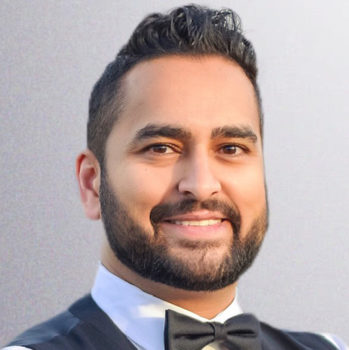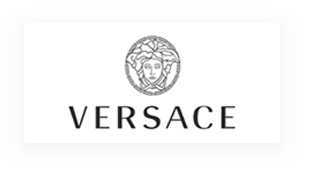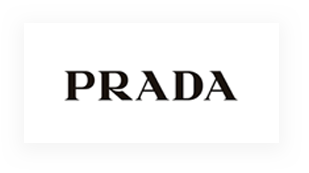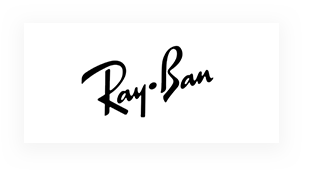Narrow-angle glaucoma, also known as angle-closure glaucoma or acute glaucoma, is a serious eye condition that can cause sudden and permanent loss of sight. It occurs when the structure inside your eye responsible for fluid drainage becomes blocked or narrowed. The resulting buildup of fluid and increased eye pressure can damage your optic nerve and cause vision loss.
Narrow-angle glaucoma is fairly uncommon, but when it does occur, vision loss can happen quickly. If you’re at risk for glaucoma, it’s crucial to be aware of the warning signs and to be proactive with your eye care. With regular comprehensive eye exams, your eye doctor can detect early signs of glaucoma and other eye diseases to help reduce their effects on your vision.
Understanding Glaucoma
Glaucoma is a term used to describe a group of eye conditions that can cause damage to your optic nerve and lead to vision loss. It’s often referred to as the “silent thief of sight” because it can develop gradually and go unnoticed until significant vision loss occurs.
One of the main factors that characterizes many types of glaucoma is increased pressure inside the eye, known as intraocular pressure (IOP). High IOP can damage your optic nerve, which is responsible for transmitting visual signals from your eye to your brain.
There are different types of glaucoma, each with its own characteristics and causes. The most common type is open-angle glaucoma, which typically develops slowly over time. When you have open-angle glaucoma, the drainage angle within your eye remains open, but the fluid does not flow out as efficiently, leading to an increase in intraocular pressure.
On the other hand, narrow-angle glaucoma occurs when the drainage angle in your eye becomes blocked or narrowed, causing a sudden rise in intraocular pressure. This type of glaucoma often causes more noticeable early symptoms and requires immediate medical attention.
There are a variety of other types of glaucoma, including:
- Normal-tension glaucoma
- Secondary glaucoma
- Pigmentary glaucoma
What Causes Narrow-Angle Glaucoma?
There are a few factors that contribute to narrow-angle glaucoma development. One common cause is a natural predisposition. Some people have a narrow drainage angle in their eyes, making them more susceptible to narrow-angle glaucoma.
Age can also play a role in the development of narrow-angle glaucoma. As we get older, the lens in your eye can thicken and push your iris forward, further narrowing the drainage angle. This age-related change can increase your risk of angle-closure glaucoma.
Certain medications can also trigger narrow-angle glaucoma. Medications that dilate the pupils, such as certain antidepressants, antihistamines, and cold remedies, can cause your iris to become enlarged and block the drainage angle in your eye.
Other factors that can contribute to narrow-angle glaucoma include certain eye conditions like cataracts, trauma to the eye, and inflammation.
Risk Factors
While there are many possible causes of narrow-angle glaucoma, there are some things that can put you at a higher risk for the condition. Some of the risk factors for glaucoma include:
- Age (being over 60 years old)
- Sex (women can have a higher risk)
- Ethnicity
- Family history
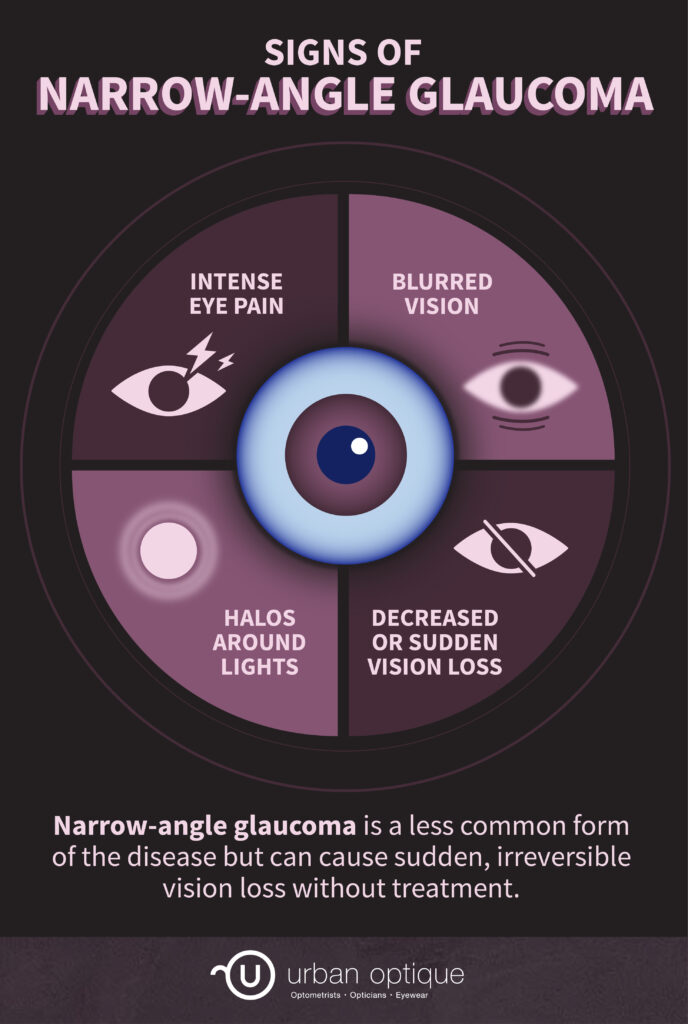
Symptoms of Narrow-Angle Glaucoma
Narrow-angle glaucoma can cause various symptoms that should not be ignored. It’s important to recognize these signs and seek medical attention promptly.
Some common symptoms of narrow-angle glaucoma include:
- Intense eye pain
- Blurred vision
- Halos around lights
- Headaches, often concentrated on one side of the head
- Nausea and vomiting
- Redness and swelling
- Decreased or sudden vision loss
It’s important to note that these symptoms can vary from person to person, and not everyone may experience all of them. If you’re experiencing any of these symptoms, it’s crucial to seek immediate medical attention—especially if they are severe or sudden. Delaying treatment can result in permanent vision loss.
Treatment for Narrow-Angle Glaucoma
When it comes to treating narrow-angle glaucoma, the primary goal is to alleviate the increased intraocular pressure and prevent vision loss.
Some common approaches to treatment include:
- Medications: Your doctor may prescribe eye drops or oral medications to help lower the pressure in your eye. These medications work by either helping reduce fluid production or helping improve fluid drainage.
- Laser therapy: Laser treatment, such as laser peripheral iridotomy, can be used to restore the flow of fluid and relieve the pressure buildup in your eye by creating a small hole in your iris.
- Surgery: In more severe cases or when other treatments are ineffective, surgical intervention may be necessary. Surgical options for glaucoma treatment include trabeculectomy, where a new drainage channel is created, or implanting a drainage device to improve fluid outflow.
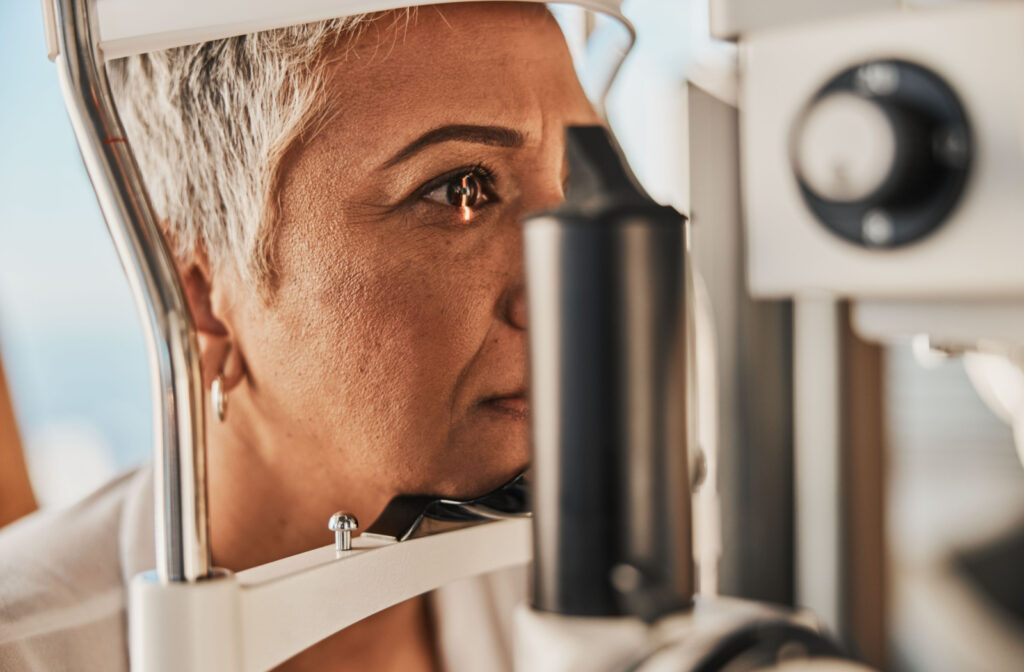
How Do You Prevent Narrow-Angle Glaucoma?
Prevention plays a crucial role in managing narrow-angle glaucoma, especially for individuals at higher risk. With lifestyle modifications, you can significantly reduce your risk of developing the disease.
Get Regular Eye Exams
Schedule regular comprehensive eye exams, especially if you have risk factors for narrow-angle glaucoma. Early detection through routine screenings can help identify potential issues before they become severe.
Do a Medication Review
Be aware of the medications you’re taking and their potential side effects on your eye health. If you’re prescribed medications that can trigger an angle closure attack, discuss alternatives with your doctor.
Adjust Your Lifestyle
Maintaining a healthy lifestyle can contribute to overall eye health. Avoid excessive alcohol consumption, as it can increase intraocular pressure. Additionally, take steps to manage other underlying conditions, such as diabetes or high blood pressure, which can trigger narrow-angle glaucoma.
Get Ahead of Glaucoma
Narrow-angle glaucoma is just one of many eye diseases that can come on suddenly, impacting your vision and quality of life. Knowing your family’s medical history, keeping up with regular eye exams and screenings, and living a healthy lifestyle can go a long way in protecting your vision.If you think you may be at risk for glaucoma, or it’s simply time for your next eye exam, request an appointment with us at Urban Optique. We can help you stay ahead of glaucoma with proactive eye care.







